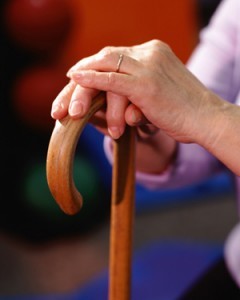Analyzing liability for a healthcare fall
 You’re a legal nurse consultant asked to be involved in analyzing liability for a healthcare fall. When injurious falls occur in a healthcare facility, a lawsuit may result. Here are some of the common deviations from the standard of care that may lead to a fall. The plaintiff’s expert witness may allege any of these deviations occurred.
You’re a legal nurse consultant asked to be involved in analyzing liability for a healthcare fall. When injurious falls occur in a healthcare facility, a lawsuit may result. Here are some of the common deviations from the standard of care that may lead to a fall. The plaintiff’s expert witness may allege any of these deviations occurred.
Failure to provide a safe environment for the visually impaired
The environment may have contributed to the fall by posing a challenge for a patient with a visual problem. A patient of any age may have difficulty seeing, but the issues are more common in the elderly. Nurses are expected to recognize the visual changes associated with aging and provide individualized measures to help prevent a fall.
Look at the medical record to see if any of these measures were followed:
• use nightlights in the bathroom and bedroom
• avoid a cluttered environment
• provide large print room door tags with the patient’s name and room number
• keep clothes and objects in the patient’s room in the same positions
• place fluorescent or brightly colored tape around outlets, light switches, and doorknobs
• mark eyeglasses with the patient’s name
• keep commonly used objects within reach of the patient so searching and stretching to reach something will not be needed
There are many factors associated analyzing liability for a healthcare fall. Many things can go wrong to create the conditions that lead to a fall. Below are some examples of deviations alleged in actual fall-related cases that I have seen in cases that we handled at my LNC business.
Failure to follow standards of care
• failure to follow the care plan intervention that two people were needed to transfer a patient
• failure to support a paraplegic patient during a shower caused a fall and fractured pelvis
• failure to respond to a patient’s call for help resulted in the patient getting up on her own and falling
• failure to appropriately train staff in transfer techniques resulted in a head injury when the patient was being transferred out of bed
• failure to respond to a patient’s request for help to get off a commode
Failure to use equipment in a responsible manner
• failure to use bed alarms and sensors
• failure to ensure that batteries were working in sensors
• failure to properly maintain a Hoyer lift, resulting in a fall
• failure to use a low bed close to the floor
• failure to put up a side rail before rolling a patient on her side led to a fall off the bed
• failure to lock the wheels of a bed or wheelchair
• failure to ensure that doors to the outside or stairwells were not left propped open on nursing units with cognitively impaired patients
Failure to communicate
• failure of the nurse to fill out forms instructing the aides on how to follow fall precautions for a woman with a previous history of a fractured hip
• failure to report a fall, leading to a delay in diagnosis of fractures
• failure of the nurse to instruct caregivers on proper transfer techniques
Failure to document
• failure to establish and record a plan to prevent falls in a patient with 57 falls and 18 head injuries
• failure to report and record details of a fall
• failure to record telephone orders for fall prevention measures
Failure to assess and monitor
• failure to monitor a patient who fell repeatedly, ultimately resulted in loss of an eye during a fall in a parking lot
• failure to assess and monitor a patient following a head injury led to undetected increases in intracranial pressure and death
Failure to act as a patient advocate
• failure to report signs of lethargy consistent with over-sedation, followed by a fall
• failure to question excessive doses of psychotropic medications
• failure to obtain a medical examination after a fall
Healthcare providers are expected to act as patient advocates to secure help for their patients. A delay in treatment may occur because:
• The healthcare providers did not collect the appropriate data needed to assess the patient’s condition. The person who fell was not thoroughly assessed and an injury was missed.
• The appropriate data was collected but the healthcare provider did not have the knowledge to critically analyze the data to find its meaning. The signs of a fracture were overlooked.
• The data were collected and analyzed, but the appropriate healthcare provider failed to respond to another person’s concerns. The nurse could not get the attention of the physician or the nurse’s concerns were dismissed.
• The concerns of the bedside clinician were heard, but the provider did not or could not make timely decisions about what to do about the changes in the patient’s condition.
Pat Iyer MSN RN LNCC wrote Analyzing Falls, Pressure Sore and IV Therapy Cases. She is the author or editor of more than 800 books, chapters, case studies, articles or online course. Grab your copy of Analyzing Falls, Pressure Sore and IV Therapy Cases to be able to confidently analyze these cases.
Sharpen your skills for the analysis of a patient fall case. Take our on demand online course on patient falls: Falls Course: The Impact of Head Injury. J View it at your convenience through our digital downloads. You will be more confident in understanding the damages and in analyzing liability for a healthcare fall case.
